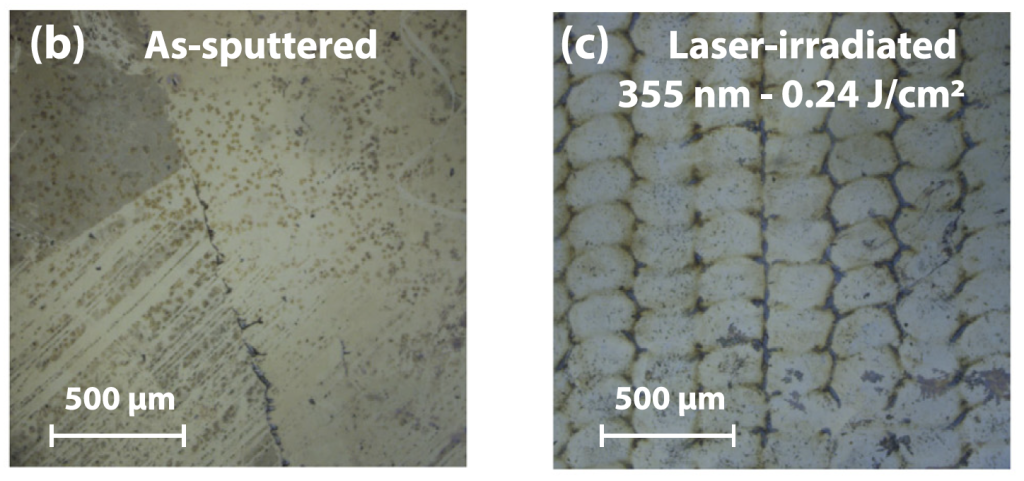Nanosecond-laser annealing of zinc oxide thin-films

Zinc oxide (ZnO) thin-films were grown via radio-frequency sputtering, and subsequently irradiated with a nanosecond laser at distinct wavelengths (266, 355, 532, and 1064 nm) and fluences (20–3000 mJ/cm2). The structural, chemical, and topological properties of the laser-irradiated films were then characterized using X-ray diffraction (XRD), Rutherford backscattering spectroscopy (RBS), and scanning electron microscopy (SEM), respectively, and compared to those of samples annealed by a conventional thermal process. It was found that samples irradiated with ultraviolet light at a fluence higher than ∼100 mJ/cm2 exhibit a high degree of crystallinity, comparable to that observed in thermally annealed samples. On the contrary, irradiation at a longer wavelength (532 and 1064 nm) does not lead to any change in crystallinity. XRD analysis revealed that the crystallized ZnO films consist of a single-phase, with grain-size as large as 35 nm. RBS analysis, on the other hand, indicates that the stoichiometry of the films becomes close to 1:1 oxygen-to-zinc ratio as the laser fluence increases. Finally, SEM topographical images show a smooth and ordered surface with spherical nanostructures. By virtue of its inherent short annealing times as low as a few minutes, the laser annealing technique discussed in this work may find wide applications in the semiconductor industry.
S. Jain et al., Thin Solid Films, 791 140236 (2024)